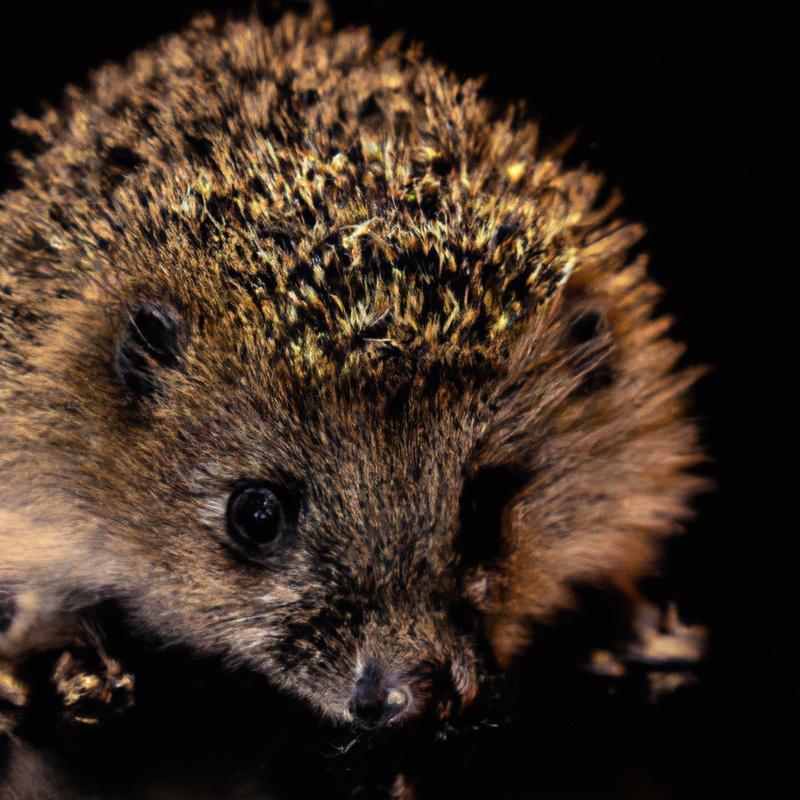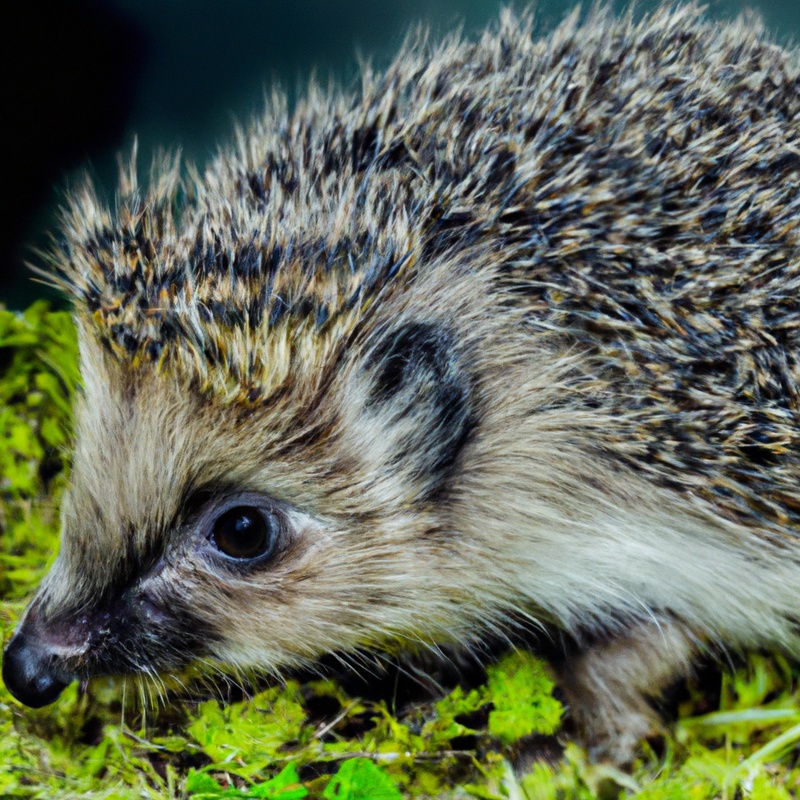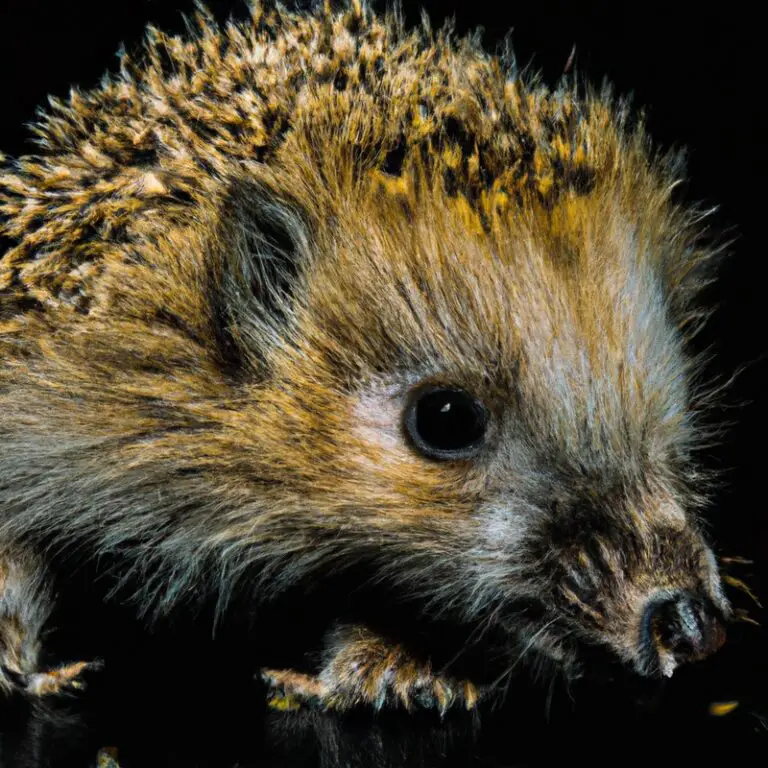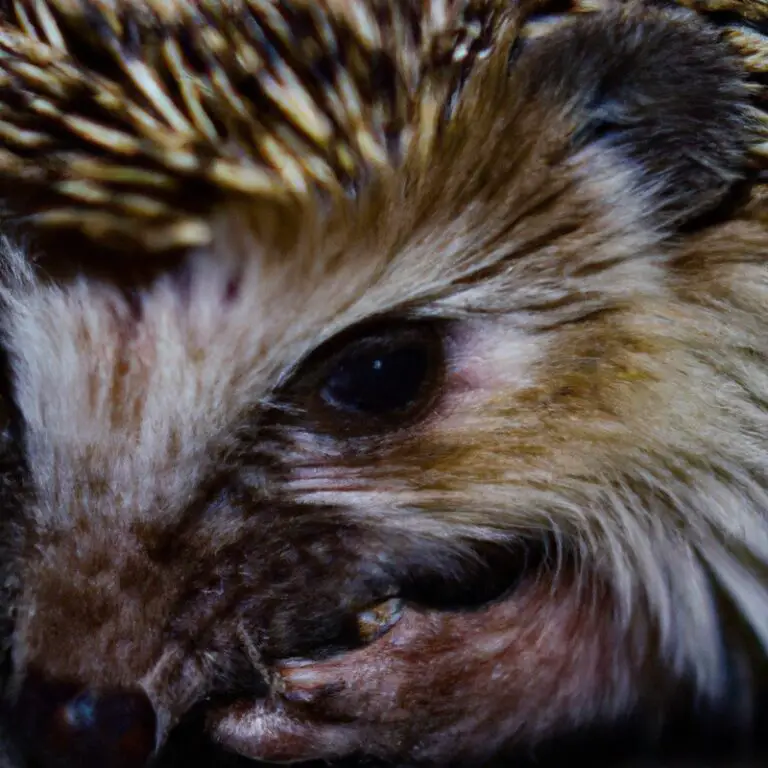How To Involve Schools In Hedgehog Conservation Efforts?
Key Takeaways:
- Collaboration with schools is crucial for engaging younger generations in hedgehog conservation.
- Schools play a significant role in raising awareness and educating students about the importance of hedgehog conservation.
- Involving schools can help create sustainable practices that support hedgehog populations in local communities.
- School involvement in hedgehog conservation efforts can inspire students to take action and become advocates for wildlife conservation.
Are you ready to take your school’s conservation efforts to the next level? Involving schools in hedgehog conservation is a powerful way to educate the future generation and raise awareness in the community.
By teaching students about these adorable and vital creatures, we can inspire them to become passionate stewards of the environment.
But how can you effectively involve schools in hedgehog conservation? Through organizing educational workshops, creating hedgehog-friendly environments, and encouraging student-led initiatives, we can empower students to make a real difference.
In this article, we will explore various ways to involve schools in hedgehog conservation efforts, share valuable resources, highlight successful examples, and address common challenges.
Get ready to ignite a love for hedgehogs in the hearts of the young ones!
| Action | Description |
| Educational programs | Develop and implement educational programs in schools to raise awareness about hedgehog conservation. |
| Nesting boxes | Distribute nesting boxes in school gardens to provide shelter for hedgehogs. |
| Habitat creation | Encourage schools to create hedgehog-friendly habitats by incorporating wildflower areas and log piles. |
| Monitoring projects | Collaborate with schools on hedgehog monitoring projects to collect data and contribute to research. |
| Community events | Organize community events in partnership with schools to involve students, teachers, and parents in hedgehog conservation activities. |
Why involve schools in hedgehog conservation efforts?
Involving schools in hedgehog conservation efforts is important for educating the future generation and raising awareness in the community.
Benefits of involving schools in hedgehog conservation
Involving schools in hedgehog conservation has numerous benefits.
- Education: Schools play a crucial role in educating children about hedgehogs and their importance in the ecosystem. This helps in building awareness and fostering a sense of responsibility towards their conservation.
- Active participation: By involving schools, students get the opportunity to actively participate in conservation efforts. This can include activities like building hedgehog-friendly habitats, creating awareness campaigns, and fundraising for rescue centers.
- Long-term impact: When students learn about hedgehog conservation at a young age, it instills a sense of environmental stewardship that can last a lifetime. By involving schools, we can create a generation of individuals who value and actively work towards protecting hedgehog populations.
- Community engagement: Involving schools in hedgehog conservation fosters community engagement. Students often involve their families and friends in conservation activities, spreading awareness and creating a ripple effect of positive change.
Overall, involving schools in hedgehog conservation is a powerful way to educate, engage, and empower the younger generation, ensuring a brighter and sustainable future for hedgehogs.

Educating the future generation
Educating the future generation is vital for hedgehog conservation efforts.
By teaching children about the importance of hedgehogs and the threats they face, we can create a sense of empathy and responsibility towards these creatures.
Schools can incorporate this education through interactive sessions, workshops, and field trips to hedgehog rescue centers.
By engaging children in hands-on activities like building hedgehog homes or participating in local conservation projects, we can inspire them to become advocates for hedgehogs and ensure their preservation for the generations to come.

Raising awareness in the community
Raising awareness in the community about hedgehog conservation is essential. Here are some effective ways to do it:
- Organize workshops or presentations in schools and community centers to educate people about the importance of hedgehog conservation.
- Distribute informative pamphlets or brochures that highlight the threats facing hedgehogs and provide simple tips on how to create hedgehog-friendly environments.
- Use social media platforms, such as Facebook, Instagram, and Twitter, to share interesting facts, tips, and success stories related to hedgehog conservation.
- Collaborate with local organizations, wildlife rescue centers, or conservation groups to host events like nature walks or hedgehog releases, allowing people to actively engage with and learn about hedgehogs.
- Encourage schools and community groups to get involved in hands-on initiatives like building hedgehog houses or creating hedgehog-friendly gardens.
Remember, raising awareness is a collective effort, and by involving the community, we can make a significant impact in protecting hedgehogs and their habitats.
Ways to involve schools in hedgehog conservation efforts
Organize workshops and presentations to educate students about hedgehog conservation.
Organizing educational workshops and presentations
Organizing educational workshops and presentations is an effective way to involve schools in hedgehog conservation efforts. These workshops and presentations can be tailored to suit different age groups and can cover topics such as the importance of hedgehogs in ecosystems, threats they face, and ways to create hedgehog-friendly habitats.
By providing interactive and engaging sessions, students can learn about hedgehogs and be motivated to take action.
Additionally, inviting local experts or organizations to conduct these workshops can further enhance the learning experience.
Creating hedgehog-friendly school environments
Creating a hedgehog-friendly school environment is a wonderful way to teach children about conservation and promote biodiversity.
Here are some simple steps to achieve this:
- Educate students about hedgehogs and their importance in ecosystems.
- Provide suitable habitat by creating small wildlife gardens or hedgehog houses on the school grounds.
- Avoid using pesticides and chemicals that may harm hedgehogs or their food sources.
- Encourage waste reduction and recycling to minimize litter that can harm hedgehogs.
- Plan educational activities like hedgehog-themed crafts and games to engage students.
By taking these steps, schools can play a vital role in protecting hedgehogs and inspiring the next generation to care for nature.
Encouraging student-led initiatives
To encourage student-led initiatives in hedgehog conservation, you can start by fostering a sense of ownership and responsibility.
Allow students to take charge of projects, such as creating hedgehog-friendly habitats or organizing awareness campaigns.
Provide them with the necessary resources and support to execute their ideas.
Encourage collaboration among students and involve them in decision-making processes.
By empowering students and giving them a platform to make a difference, you can cultivate their passion for hedgehog conservation and inspire them to take action.
Resources for involving schools in hedgehog conservation efforts
For involving schools in hedgehog conservation efforts, there are a few key resources to consider. These include curriculum integration ideas, educational materials and lesson plans, and collaborating with local wildlife organizations.
Curriculum integration ideas
Curriculum integration ideas for involving schools in hedgehog conservation efforts include:
- Science: Teach students about hedgehog habitats, diet, and life cycle. Discuss threats to their survival and ways to protect them.
- English/Language Arts: Have students read and write stories about hedgehogs, promoting awareness and empathy for these creatures.
- Math: Use hedgehog-related word problems and data analysis to engage students in real-world applications of mathematical concepts.
- Art: Encourage students to create hedgehog-inspired artwork, showcasing their creativity and raising awareness.
- Geography: Explore hedgehog distribution around the world, discussing the importance of preserving their habitats in different regions.
- Physical Education: Organize hedgehog-themed relay races or obstacle courses, combining physical activity with conservation education.
Remember, integrating hedgehog conservation into various subjects helps students develop a deeper understanding and connection to these amazing creatures.
Educational materials and lesson plans
Educational materials and lesson plans play a vital role in engaging students in hedgehog conservation efforts. To get started, you can find a wealth of resources online, such as fact sheets, videos, and interactive activities, that introduce students to the importance of hedgehogs and their conservation needs.
Additionally, lesson plans can be designed to incorporate various subjects like science, geography, and art, making the learning experience more comprehensive and enjoyable for students.
By using these educational materials and lesson plans, you can inspire the next generation to take action and contribute to hedgehog conservation.
Collaborating with local wildlife organizations
Collaborating with local wildlife organizations is a key step towards involving schools in hedgehog conservation efforts. These organizations have the knowledge and resources to support and guide educational activities.
By partnering with them, schools can access expert advice, educational materials, and even opportunities for field trips.
Local wildlife organizations can also help schools connect with other stakeholders, such as volunteers and community groups, to further enhance their conservation initiatives. Working together, schools and wildlife organizations can make a real difference in protecting hedgehog habitats and raising awareness among students.
Successful examples of school involvement in hedgehog conservation
Successful examples of school involvement in hedgehog conservation include:
- Hedgehog gardens: Some schools have created dedicated areas within their grounds as hedgehog-friendly habitats. Students learn about the needs of hedgehogs and actively contribute to providing suitable food, water, and shelter for them.
- Awareness campaigns: Schools have organized awareness campaigns where students educate their peers, families, and local communities about the decline of hedgehog populations and simple steps they can take to help, such as creating hedgehog-friendly gardens.
- Citizen science projects: Schools have participated in citizen science projects focused on hedgehog conservation. Students collect data on hedgehog sightings, monitor hedgehog activity, and contribute to research efforts.
- Fundraising initiatives: Schools have organized fundraising initiatives to support local hedgehog rescue centers and conservation organizations. Students take part in activities such as sponsored walks, bake sales, or creating and selling hedgehog-themed crafts.
- Curriculum integration: Some schools have incorporated hedgehog conservation into their curriculum, incorporating lessons on hedgehog ecology, habitat restoration, and the importance of biodiversity. This allows students to deepen their understanding and actively contribute to conservation efforts.
Overcoming challenges in involving schools in hedgehog conservation efforts
Limited time and resources make involving schools in hedgehog conservation efforts challenging, but raising awareness and providing educational resources can help overcome this barrier.
Limited time and resources
Limited time and resources can be a challenge when it comes to involving schools in hedgehog conservation efforts. However, there are some strategies you can consider to overcome these obstacles.
Here are a few suggestions:
- Partner with local organizations: Collaborating with local wildlife or environmental organizations can help alleviate the burden of limited time and resources. They may already have programs or initiatives in place that schools can participate in.
- Seek funding opportunities: Look for grants or funding specifically aimed at supporting educational projects or conservation efforts. This can help provide the necessary resources to implement hedgehog conservation activities in schools.
- Utilize existing curriculum: Incorporate hedgehog conservation into existing subjects or topics taught in schools. This way, you can integrate conservation efforts without requiring additional time or resources.
- Engage volunteers: Reach out to parents, community members, or even older students who may be interested in volunteering their time to assist with hedgehog conservation activities in schools. Their involvement can help extend the reach of your conservation efforts.
Remember, even small steps towards involving schools in hedgehog conservation can make a difference. Don’t be discouraged by limited time and resources – with creativity and determination, you can still create meaningful impact.
Lack of knowledge and awareness
Many schools and communities have a lack of knowledge and awareness about hedgehog conservation efforts. This can be a barrier to getting schools involved in such initiatives.
To address this, it is important to provide educational resources and workshops for teachers and students.
These resources can help increase awareness about the importance of hedgehog conservation and provide practical steps that schools can take to contribute to these efforts. By fostering a sense of understanding and connection to hedgehogs, schools can play a crucial role in their conservation.
FAQs about involving schools in hedgehog conservation efforts
How can schools create hedgehog-friendly environments?
Schools can create hedgehog-friendly environments by:
- Providing safe shelter: Encouraging the use of log piles, compost heaps, and wildlife-friendly hedges as nesting places for hedgehogs.
- Creating wildlife-friendly gardens: Planting native flowers, shrubs, and trees that attract insects, a crucial food source for hedgehogs.
- Minimizing pesticide use: Avoiding the use of chemical pesticides that can harm hedgehogs and their food sources.
- Reducing hazards: Ensuring access points like fences and gates have hedgehog-friendly gaps to prevent trapping, and avoiding the use of netting that can entangle hedgehogs.
- Educating students: Teaching children about the importance of hedgehog conservation, their habitat needs, and how they can help protect these amazing creatures.
What educational resources are available for teaching about hedgehog conservation?
There are a variety of educational resources available for teaching about hedgehog conservation.
Some options include:
- Online materials and websites: There are many websites that provide educational resources specifically designed for teaching about hedgehog conservation. These resources often include downloadable worksheets, lesson plans, and informative videos.
- Books and publications: There are numerous books and publications available that focus on hedgehog conservation. These resources can provide in-depth information about hedgehog biology, threats they face, and ways to help preserve their habitats.
- Interactive activities: Engaging students through hands-on activities can be a great way to teach about hedgehog conservation. Some resources offer activities like making DIY hedgehog houses or creating artwork that raises awareness about hedgehog conservation.
- Wildlife organizations: Many wildlife organizations offer educational materials and resources for teaching about a variety of conservation topics, including hedgehog conservation. These resources may include fact sheets, presentations, and guides for educators.
- Local experts or organizations: Reach out to local experts or organizations that specialize in wildlife conservation, particularly hedgehog conservation. They may be able to provide educational resources, give presentations or workshops, or even arrange field trips to learn about hedgehogs in their natural habitats.
Remember, when selecting educational resources, consider the age and interests of your students, as well as the specific conservation objectives you want to address.
How can schools collaborate with local wildlife organizations in hedgehog conservation efforts?
Schools can collaborate with local wildlife organizations in hedgehog conservation efforts by:
- Inviting experts to give educational talks and workshops to students about hedgehog habitats, behavior, and conservation.
- Organizing fundraisers to support local wildlife organizations that work towards hedgehog conservation.
- Creating hedgehog-friendly environments within school grounds, such as providing access to food, water, and shelter.
- Encouraging students to participate in citizen science projects, like hedgehog surveys or monitoring programs.
- Collaborating with wildlife organizations to develop educational resources and materials for classroom use.
- Partnering with local wildlife organizations to organize field trips or volunteering opportunities related to hedgehog conservation.
What are some potential challenges in involving schools in hedgehog conservation efforts and how can they be overcome?
Getting schools involved in hedgehog conservation efforts can be challenging due to various factors.
Some potential challenges include lack of awareness and understanding about hedgehogs, limited resources and time constraints, and competing priorities within the curriculum.
To overcome these challenges, education programs can be developed to raise awareness and provide information about hedgehogs and their conservation needs.
Collaboration with local wildlife organizations can help provide resources, expertise, and support.
Integrating hedgehog conservation into existing subjects like science or nature studies can make it easier for schools to incorporate these efforts into their curriculum.
Additionally, involving students in practical activities such as creating hedgehog-friendly spaces in school grounds can make the conservation efforts more engaging and impactful.
Final Verdict
Involving schools in hedgehog conservation efforts is a crucial step in safeguarding these beloved creatures for future generations. The benefits are twofold: educating the future generation and raising awareness in the community.
By organizing educational workshops, creating hedgehog-friendly environments, and encouraging student-led initiatives, schools can actively contribute to conservation efforts.
Resources such as curriculum integration ideas, educational materials, and collaboration with local wildlife organizations provide the necessary tools. Successful examples like the Hedgehog Heroes program and conservation clubs inspire school involvement.
Overcoming challenges of limited time and resources, as well as lack of knowledge and awareness, is possible through proactive measures.
In conclusion, by involving schools, we can foster a deep connection between children and hedgehogs, ensuring their protection for years to come.







